And here are a couple other highly ornate examples to show:
[ Linked Image ] [ Linked Image ] [ Linked Image ]
Click the photograph to see a higher-resolution detailed version
Left: Saber, circa 1590
Center and Right: German Rapier, circa 1640
Hi Nathan,
You had posted this image the other day:
http://pics.myArmoury.com/spadavenezia1500a.html
Can you provide any references or more background info on this sword? I am quite intrigued by it and would like to go a little deeper with research. The more I examine it, the more early 20th century motifs it seems to have - which is entirely possible on a 16th century piece - but has made me all the more curious....
Thanks,
-TJO
You had posted this image the other day:
http://pics.myArmoury.com/spadavenezia1500a.html
Can you provide any references or more background info on this sword? I am quite intrigued by it and would like to go a little deeper with research. The more I examine it, the more early 20th century motifs it seems to have - which is entirely possible on a 16th century piece - but has made me all the more curious....
Thanks,
-TJO
Just fwiw from the Japanese sword perspective...
One thing that makes it *so* easy to pick out swords designed by non-Japanese or Chinese fakes or whatever is that they miss the aesthetic. There are some amazingly, um, well, guady as hell swords out there (looking at them through modern eyes that is). "Dress up and see the shogun and show off the size of your manly bits" kinda swords. But. They always have a sort of internal consistency. They usually have a theme running through them, an overall feel, a "design" of sorts. Often superbly subtle. Sometimes really overdone. But it is there.
Most modern designed stuff (my own included sometimes I must admit) often misses that sort of thing. It is tough. It is hard to be subtle. But subtle doesn't always mean lacking flash. It can have lots of "bling" to use a modern phrase but that "bling" needs to fit. In the design. In functionality. It has to have a "raison d'etre".
The point that has been drilled into me by the various people who have taught me the craft is that form does still follow function. Most things are there because they make the sword better. That heavy gold part there better be offset in terms of balance elsewhere in the piece. The use of the soft gold foil over the habaki makes sense but the copper habaki underneath better be properly work hardened for actual use. The foil on just the seppa (washers) should be thin enough so they don't introduce extra play by compressing when the entire rig is put together. And on and on.
Some mistake the concept of "Shibui" ("understated elegance" is the common translation) with it must be simple. Not really the case. If it is fairly ornate, there is usually a lot more going on underneath it all.
And some of the most ornate *good* sword mounts in Japanese culture are often *extremely* well made. The extra stuff is done "because ya can" and not for it's own sake if that makes any sense. Showing more ability, more control, etc. is all good. Some things were done because they were *very* difficult to do well and maintain the functional aspects of the sword at the same time.
Interesting thread... Got me thinking about my own projects...
One thing that makes it *so* easy to pick out swords designed by non-Japanese or Chinese fakes or whatever is that they miss the aesthetic. There are some amazingly, um, well, guady as hell swords out there (looking at them through modern eyes that is). "Dress up and see the shogun and show off the size of your manly bits" kinda swords. But. They always have a sort of internal consistency. They usually have a theme running through them, an overall feel, a "design" of sorts. Often superbly subtle. Sometimes really overdone. But it is there.
Most modern designed stuff (my own included sometimes I must admit) often misses that sort of thing. It is tough. It is hard to be subtle. But subtle doesn't always mean lacking flash. It can have lots of "bling" to use a modern phrase but that "bling" needs to fit. In the design. In functionality. It has to have a "raison d'etre".
The point that has been drilled into me by the various people who have taught me the craft is that form does still follow function. Most things are there because they make the sword better. That heavy gold part there better be offset in terms of balance elsewhere in the piece. The use of the soft gold foil over the habaki makes sense but the copper habaki underneath better be properly work hardened for actual use. The foil on just the seppa (washers) should be thin enough so they don't introduce extra play by compressing when the entire rig is put together. And on and on.
Some mistake the concept of "Shibui" ("understated elegance" is the common translation) with it must be simple. Not really the case. If it is fairly ornate, there is usually a lot more going on underneath it all.
And some of the most ornate *good* sword mounts in Japanese culture are often *extremely* well made. The extra stuff is done "because ya can" and not for it's own sake if that makes any sense. Showing more ability, more control, etc. is all good. Some things were done because they were *very* difficult to do well and maintain the functional aspects of the sword at the same time.
Interesting thread... Got me thinking about my own projects...
| Thom O'Leary wrote: |
| Hi Nathan,
You had posted this image the other day: [ Linked Image ] Can you provide any references or more background info on this sword? I am quite intrigued by it and would like to go a little deeper with research. The more I examine it, the more early 20th century motifs it seems to have - which is entirely possible on a 16th century piece - but has made me all the more curious.... |
I think it's a fascinatingly unqiue piece and was hoping it would draw some attention for the very reasons you describe. It dfinitely looks to have Art Deco influences, doesn't it? Rather, it's a precursor to such a design movement, as this piece was created circa 1500!
Venice, c. 1500 from the Carrand Collection
Here's some accompanying text, in Italian:
[ Linked Image ]
And an illustration of the sword's fittings:
[ Linked Image ]
Click to enlarge
| Lee O'Hagan wrote: |
| Steve,
Was there any text or a book reference for the second Charlemagne picture you posted, I've got pics of the first one but have only seen pencil drawings of the second in one of Oakeshott's books, Cheers. :) |
Kirk Lee Spencer just posted some photos of the saber In this topic I've never seen this specific photos. Thanks, Kirk!
| Nathan Robinson wrote: |
| And here are a couple other highly ornate examples to show:
Center and Right: German Rapier, circa 1640 |
Perhaps a rapier isn't that good an example for an ornate "real" sword because you won't find them in fantasy movies and can't compare them directly with "Conan-the-Barbarian-style" swords.
(And if you find rapiers in movies they mostly are less ornate than the real thing (like the Cup-hilt rapiers of the old swashbuckler movies))
Just a thought.
Thanks Nathan,
Cool pics Kirk cheers,
There was also some pics of the Charlemagne sabre over at SFI in the pub under,
Sabres,sabres,sabres,
Mathias,
I've always been fond of this fantasy rapier,
Six fingered rapier of The Princess Bride,
 Attachment: 76.51 KB
Attachment: 76.51 KB
[ Download ]
Cool pics Kirk cheers,
There was also some pics of the Charlemagne sabre over at SFI in the pub under,
Sabres,sabres,sabres,
Mathias,
I've always been fond of this fantasy rapier,
Six fingered rapier of The Princess Bride,
[ Download ]
OK, so there are fantasy rapiers, thanks
Hi there, yet another newcomer here...
For historical swords comparable to those in Conan the Barbarian and such films, one could do worse than look at Viking swords. A couple of examples:
[ Linked Image ]
From the viking burial site of Kilmainham
[ Linked Image ]
One of my all-time favorites, this beauty... from Lund, IIRC (note the locket stuck to the crossguard)
All in all, I think the main difference between the decoration on historical and fantasy swords is that, in historical examples it very rarely interferes with the sword's function, while in many fantasy designs the decorative elements would seem at the least distracting, and at worst downright dangerous, to the user - for example, the ever-popular horns/talons/fangs curving from the cross *towards the grip*, making it impossible to hold without having them dig into you hand, wrist, or arm; or the frequently impractical decoration on the grip itself, making it uncomfortable in the extreme to actually grip. Also, the fantasy decorative motifs and themes are usually quite easy to distinguish from historical ones - there's a certain, almost invariable, Hammer Gothic or Art Nouveau air to the modern fantasy variety.
Not that this necessarily makes the fantasy pieces unattractive, of course (I love Art Nouveau and Hammer horror films, too :)), but it does make them stand out from historical specimens. Which might be either good or bad, depending on your tastes and needs.
For historical swords comparable to those in Conan the Barbarian and such films, one could do worse than look at Viking swords. A couple of examples:
[ Linked Image ]
From the viking burial site of Kilmainham
[ Linked Image ]
One of my all-time favorites, this beauty... from Lund, IIRC (note the locket stuck to the crossguard)
All in all, I think the main difference between the decoration on historical and fantasy swords is that, in historical examples it very rarely interferes with the sword's function, while in many fantasy designs the decorative elements would seem at the least distracting, and at worst downright dangerous, to the user - for example, the ever-popular horns/talons/fangs curving from the cross *towards the grip*, making it impossible to hold without having them dig into you hand, wrist, or arm; or the frequently impractical decoration on the grip itself, making it uncomfortable in the extreme to actually grip. Also, the fantasy decorative motifs and themes are usually quite easy to distinguish from historical ones - there's a certain, almost invariable, Hammer Gothic or Art Nouveau air to the modern fantasy variety.
Not that this necessarily makes the fantasy pieces unattractive, of course (I love Art Nouveau and Hammer horror films, too :)), but it does make them stand out from historical specimens. Which might be either good or bad, depending on your tastes and needs.
Does anyone have any additional information on the Teutonic sword that Lee O'Hagan posted? I am very interested in learning more about it--especially since it seems very well preserved for a 13th Century sword.
The two-handed sword of Mehmet the Conqueror, with the sultan's genealogy inlaid in gold along the blade, in the Topkapi collections:
[ Linked Image ]
Yataghan of Suleiman I, also in Topkapi:
[ Linked Image ]
[ Linked Image ]
Yataghan of Suleiman I, also in Topkapi:
[ Linked Image ]
Great thread, guys! I agree with Nathan's premise compeletely. While the simple, serious pieces hold their own allure for me, it is usually the ornate that gets my attention these days.
Here's one of my favorites:
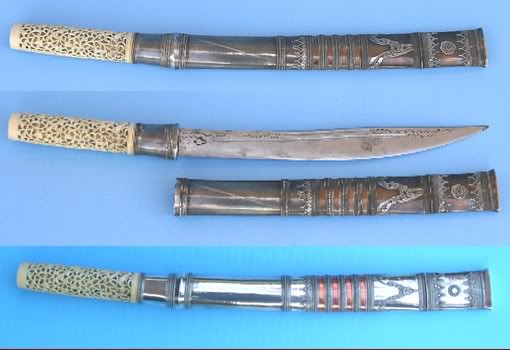
Here's one of my favorites:

Here are a couple I got to handle in Switzerland :p :
 Attachment: 17.62 KB
Attachment: 17.62 KB
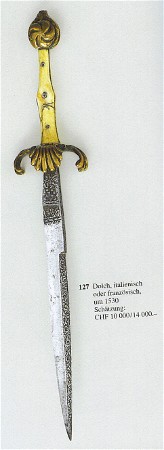
 Attachment: 26.51 KB
Attachment: 26.51 KB
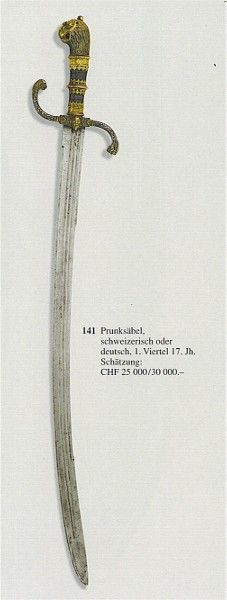


Here are a few more beauties:
 Attachment: 35.55 KB
Attachment: 35.55 KB

 Attachment: 61.59 KB
Attachment: 61.59 KB
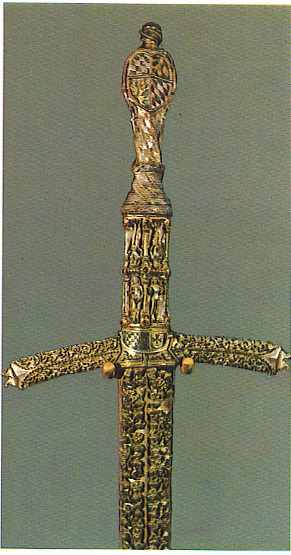


more
 Attachment: 83.67 KB
Attachment: 83.67 KB

 Attachment: 59.03 KB
Attachment: 59.03 KB



and more
 Attachment: 85.54 KB
Attachment: 85.54 KB
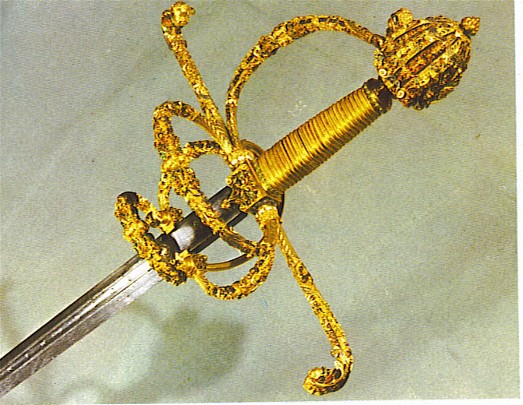

even more
 Attachment: 49.08 KB
Attachment: 49.08 KB
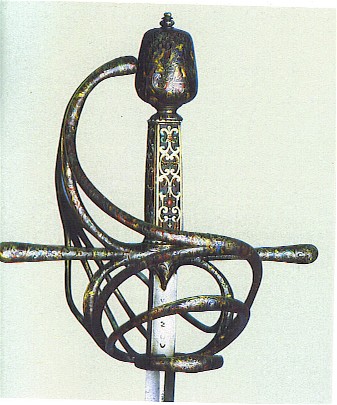
 Attachment: 25.02 KB
Attachment: 25.02 KB



and done!
 Attachment: 41.44 KB
Attachment: 41.44 KB

 Attachment: 28.07 KB
Attachment: 28.07 KB

 Attachment: 36.31 KB
Attachment: 36.31 KB
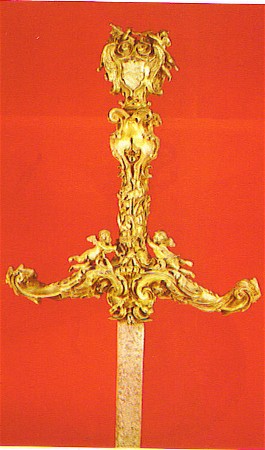



I lied...a few more:
 Attachment: 42.34 KB
Attachment: 42.34 KB
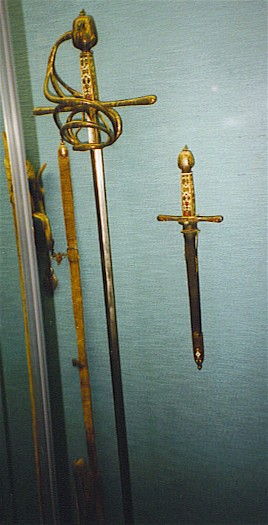
 Attachment: 39.93 KB
Attachment: 39.93 KB
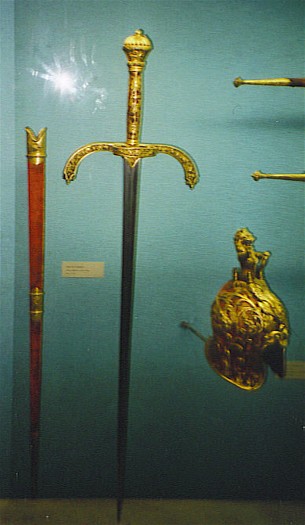


Now I'm done...for now.
 Attachment: 33.21 KB
Attachment: 33.21 KB
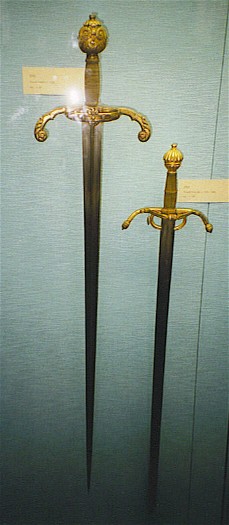
 Attachment: 54.96 KB
Attachment: 54.96 KB
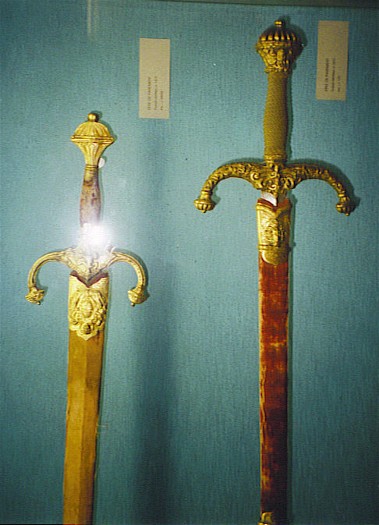


Page 3 of 6
You cannot post new topics in this forumYou cannot reply to topics in this forum
You cannot edit your posts in this forum
You cannot delete your posts in this forum
You cannot vote in polls in this forum
You cannot attach files in this forum
You can download files in this forum
All contents © Copyright 2003-2006 myArmoury.com — All rights reserved
Discussion forums powered by phpBB © The phpBB Group
Switch to the Full-featured Version of the forum
Discussion forums powered by phpBB © The phpBB Group
Switch to the Full-featured Version of the forum